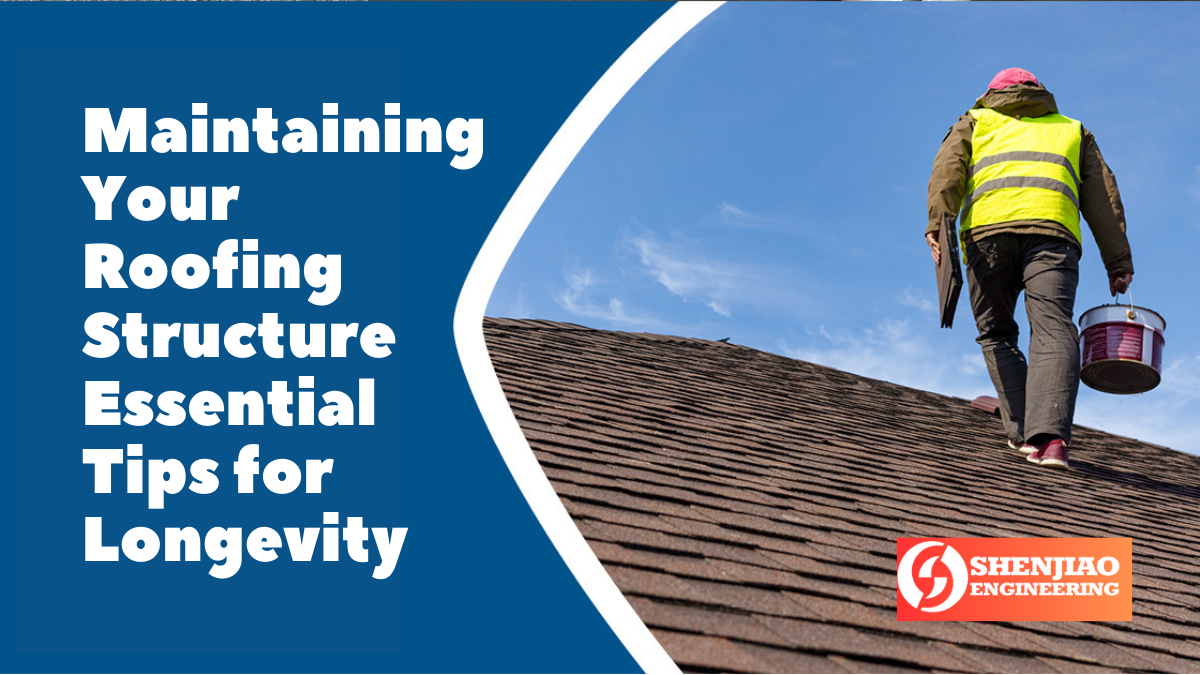A well-maintained roofing structure is essential for the longevity and durability of your home. Regular maintenance protects your property from the elements and helps you avoid costly repairs and potential structural damage. Whether you have a shingle, tile, or metal roof, understanding the key steps to maintain your roofing structure is crucial. This article will explore tips and best practices for keeping your roofing structure, ensuring its longevity and optimal performance.
From conducting regular inspections to addressing common roofing issues, implementing preventive measures, and seeking professional assistance when necessary, we will provide practical guidance to keep your roof in excellent condition. By following these tips and incorporating them into your maintenance routine, you can safeguard your investment, enhance your home's curb appeal, and enjoy peace of mind knowing that your roofing structure is well-maintained and capable of withstanding the tests of time.
Regular Inspections
Regular inspections are essential for maintaining the health and longevity of your roofing structure. Conduct visual checks from both the interior and exterior of your home. Start by examining your attic for signs of water damage, such as discolouration or dampness, which may indicate a leaking roof. From the exterior, look for missing, cracked, or damaged shingles and signs of sagging or unevenness.
During inspections, pay attention to areas prone to leaks, such as valleys, flashing around chimneys and vents, and the junctions where different roof planes meet. Check for loose or deteriorating caulking, cracked seals, or damaged flashing that may need to be repaired or replaced. Look for signs of wear and tear, such as curling or blistering shingles, as these can indicate the need for repair or replacement.

Cleaning and Debris Removal
Regular cleaning and debris removal are crucial for maintaining the integrity of your roofing structure. Leaves, branches, and other debris can accumulate on your roof, causing moisture buildup, clogged gutters, and potential damage. Use caution when removing debris to avoid damaging the shingles or roof surface.
Clean gutters and downspouts to ensure proper water drainage. Clogged drains can lead to water overflow, seeping into your roof and causing water damage. Consider installing gutter guards to prevent debris from entering the gutters and blocking the water flow.
Trim overhanging tree branches that could damage your roof during storms or high winds. Falling branches can cause significant damage to shingles and other roofing materials. Keep the roof surface clear of moss or algae growth, as these can trap moisture and accelerate the deterioration of your roofing structure.
Roof Repairs
Addressing roofing issues promptly is crucial to prevent further damage and costly repairs. If you notice signs of leaks, such as water stains on your ceiling or walls, address them immediately. Locate the source of the leak and repair or replace damaged roofing materials accordingly. Ignoring leaks can lead to structural damage and mould growth.
Replace missing or damaged shingles to maintain the protective barrier of your roofing structure. Damaged or cracked shingles can allow water to seep into the underlying layers and cause rot or decay. Secure loose shingles to prevent them from being blown off during storms.
Repair or replace damaged flashing around chimneys, vents, and skylights. Flashing acts as a waterproof barrier, preventing water from entering vulnerable areas. If the flashing is corroded, loose, or damaged, it can compromise the integrity of your roofing structure and lead to leaks.
Preventive Measures
Implementing preventive measures can significantly extend the lifespan of your roofing structure and minimize the need for repairs. Apply roof coatings to protect your roof from UV rays, weathering, and temperature extremes. Roof coatings act as a barrier, reducing heat transfer and preventing premature deterioration of the roofing materials.
Ensure proper attic ventilation to prevent moisture buildup. Improper ventilation can lead to condensation, damaging the roof deck and insulation. Install vents or exhaust fans to maintain consistent airflow and prevent excess moisture.
Consider installing gutter guards to prevent debris from entering the gutters and causing clogs. Clogged drains can lead to water overflow, damaging your roofing structure and potentially causing water infiltration.

Professional Roofing Maintenance
While homeowners can handle some maintenance tasks, there are instances where professional expertise is necessary. Hire professional roofers for regular inspections, especially if you're uncomfortable with heights or lack experience identifying roofing issues. Professional roofers have the knowledge, experience, and specialized equipment to conduct thorough inspections and detect potential problems that may go unnoticed.
Professional roofers can also handle complex repairs or replacements that require specialized skills. They have access to high-quality materials and can ensure that the repairs are done correctly, minimizing the risk of future issues.
Additionally, professional roofers can provide valuable advice on maintenance practices, recommend appropriate roofing materials for your climate, and offer guidance on maximizing the lifespan of your roofing structure.
Conclusion
Maintaining your steel structure for roofing is a fundamental aspect of homeownership that should be considered. By implementing regular inspections, practising proper cleaning and debris removal, addressing repairs promptly, taking preventive measures, and seeking professional assistance, you can ensure the longevity and reliability of your roof.
Proactive maintenance helps prevent costly repairs and safeguards your home and belongings from potential water damage and structural issues. Investing time and effort in maintaining your roofing structure can extend its lifespan, and enjoy peace of mind knowing that your home is protected.
Remember, prevention is vital. Regular inspections and maintenance allow you to catch minor issues before they escalate into major problems. Additionally, following proper cleaning and preventive measures can significantly enhance the performance and durability of your roof.
